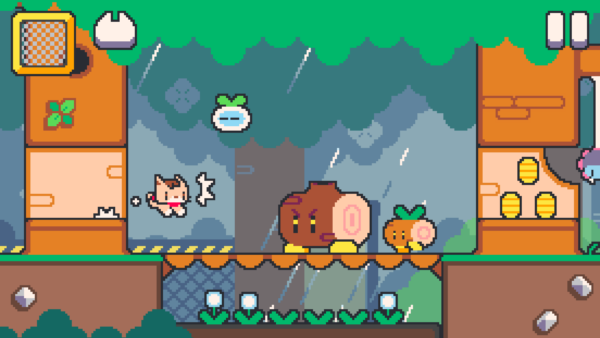
Developers Laura Gray and Arseniy Klishin talk to us about their one-of-a-kind narrative RPG, Cabernet, and its breed of upper-crust vampires.
Whether they show up in film, literature or games, vampires are seldom just vampires. They might be a metaphor for disease or about a fear of the Other, but blood-sucking monsters are almost always a stand-in for social anxieties of some sort, whether their authors intended them to be or not.
In Cabernet, the upcoming horror adventure from London-based indie developer Party for Introverts, vampirism serves as a very deliberate means to comment on morality, the way the wealthy can prey on the poor, and also as a metaphor for addiction.
“We couldn’t just make a game because it’s about vampires, even though I have a deep personal connection to the subject,” says Arseniy Klishin, Cabernet’s writer and programmer. “But then we eventually realised that it’s a great metaphor for some things we wanted to talk about – alcoholism, existential guilt. And that eternal life isn’t necessarily a gift – the mistakes you make will stay with you forever.”
Set in the 19th century, Cabernet is told from the perspective of Liza, a young doctor who, in a memorably off-kilter opening, wakes up in the dank crypt of a sprawling manor house populated by bourgeois vampires. Unnerved, Liza journeys up from the crypt and into the midst of a party in full-flow; mingling with the revellers, the realisation dawns that these aren’t just your usual cluster of upper-class eccentrics – and that the ‘cabernet’ they talk about is an obvious codeword for blood (“We don’t want to alarm any innocents,” one character intones).
So begins an absorbing gothic horror adventure about Liza coming to terms with her new vampire status, and where player choices affect her path through the game – not least the moral dimension that comes from satisfying her need for blood. Do you feed on mortal humans, or slake your thirst by hunting rabbits?
“The main story deals a lot with society of the time – and negative elements, such as moral and governmental corruption,” says Klishin of the game’s late 19th century setting. “Those are things that are still happening today – very much so.”
“When we were brainstorming some ideas with the story, it made sense,” continues designer, artist and story editor, Laura Gray. “The general time period, a little bit before the industrial revolution, plays thematically into the story, so that transition into the modern-day provided a really helpful throughline for the themes we wanted to get across.”
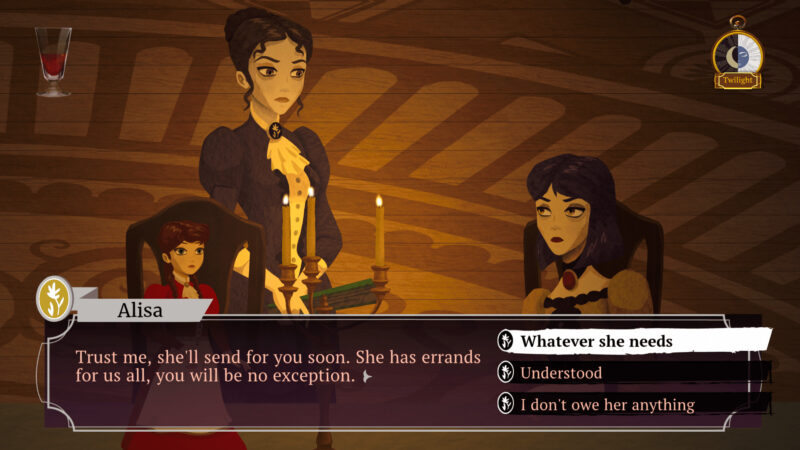
Credit: Party For Introverts.
Those themes provide the basis for what is an intriguing mix of genres. Although a primarily narrative-driven adventure, there are RPG elements, such as experience points you can amass and then spend on Liza’s boosting educational leanings. Invest more points in music and arts, for example, and she’ll have more insight into paintings hanging on walls, which can yield useful clues; channelling points into such areas as science and logic or history and politics will similarly affect how Liza reacts to the world around her.
There’s also a neat power wheel, from which you can choose from a range of abilities that grows as Liza progresses. In the demo whynow Gaming played, Liza has the ability to transform into a vampire bat and back again more or less at will. Movement feels satisfyingly speedy in winged mode, and will likely be a handy way of rapidly traversing the wider town that lies outside the vampires’ mansion. Klishin and Gray say there’ll also be invisibility among Liza’s other unlockable powers – an ability she’ll need to use if she decides to go and hunt some unsuspecting rabbits. All the same, all these elements are in service to the themes behind the game, says Gray.
“We have different mechanics in our game – it’s quite a mix of genres,” she says. “It’s actually been quite difficult to pin down how to describe it. We have a feeding mechanic, for example, and there’s an intoxication mechanic. Those are designed to loosely mimic alcoholism and the cycles that happen. We hope it makes people think a little bit, or reflect on something potentially relevant in their own life.”
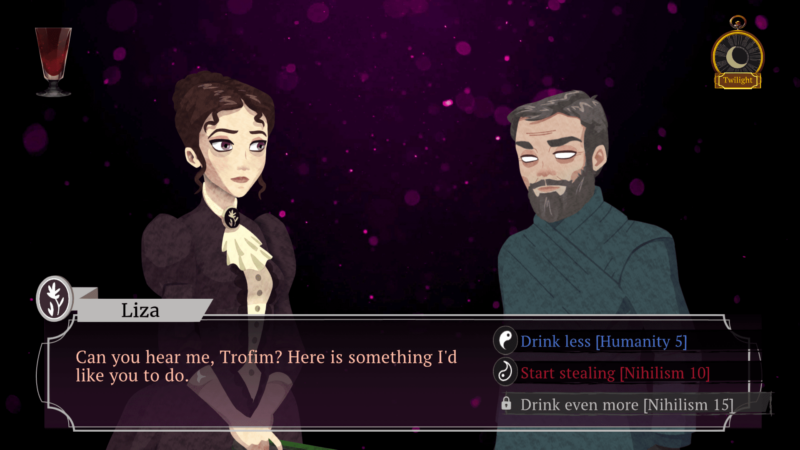
Credit: Party For Introverts.
Although Cabernet is Party for Introverts’ first “full-length” project, the indie studio has focused on making personal experiences that explore themes and ideas that aren’t often seen in video games. The studio’s debut, 2016’s Thing-in-itself, is a short story inspired by the work of philosopher Immanuel Kant. From Head to Toe is a matchbox-sized tale about two longtime friends and their childhood reminiscences.
If Party for Introverts’ output runs against the grain of most games, then maybe that’s because they bring so much life experience to their work. Originally from Pittsburgh, Gray has a background in theatre production and acting (as well as providing voiceover work for her own games, Gray also has a credit on Guerilla Games’ Horizon Forbidden West). Klishin, meanwhile, has served as manager of production at Sony for several years, having worked on such triple-A titles as God of War (2018), Marvel’s Spider-Man and Returnal.
For Gray and Klishin, their work as producers – in theatre and video games, respectively – have served as a useful grounding as they’ve turned to indie development.
“It’s obviously my personal opinion,” says Klishin, “but everybody who wants to be an indie developer should work in triple-A at some point, because you learn tons. You learn how to make things within a certain scope. You learn to work with teams, and how budgets work, and how people from different disciplines interact with each other… Being a producer was really helpful, too because you interact with all kinds of people, work with budgets, understand how to make priorities.”
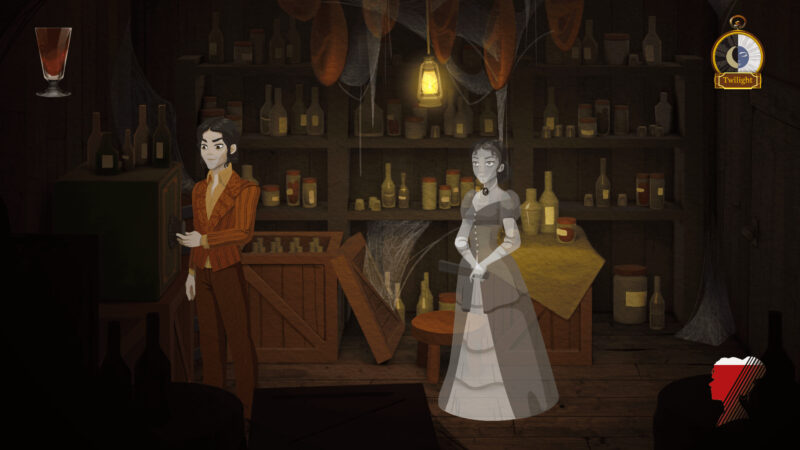
Credit: Party For Introverts.
Those skills came in particularly handy when it came to getting funding to make Cabernet – which, with its voluminous script and ambitious campaign, needed a much bigger budget than their earlier shorts. “As producers, we’re very much – perhaps more than most people – about having a concrete pitch deck, and all the beats of our vision mapped out,” says Gray. “So using our skills meant we went in with a full presentation, a budget, a mapped out vision of it all happening… if you’re pitching to someone, it’s absolutely best to have a clear idea of how you’d do the process, at least initially.”
With the help of artist Jeremy Nixon, Gray and Klishin could go into their pitch meanings with fully-realised designs for the lead character – something Gray recommends to other indie developers looking to secure funding from investors. “Don’t go into a pitch [meeting] with non-finalised art,” she says, “because everyone’s like, ‘Oh, just do a rough draft – have blocks of how the game’s going to be’. In our experience, that’s not true. You need to go in with a very polished main asset or something; we’re past the days where you can show blocks and say, ‘Look how cool this is.’”
“A couple of caveats, there,” says Klishin. “Our job is to sell a very narrative-heavy experience. To sell the atmosphere, to tell the story. That’s admittedly hard to do when you’re playing with blocks. But you’ll have a much better chance if your artwork’s pretty and your animations are in a decent place. That being said, a lot of publishers say, ‘We don’t need your game to be finished; we just need to understand that your prototype is fun.’ I found this to be incorrect – I don’t think a lot of people have that insight. They might think they do, but most don’t. So that’s something to watch out for.”
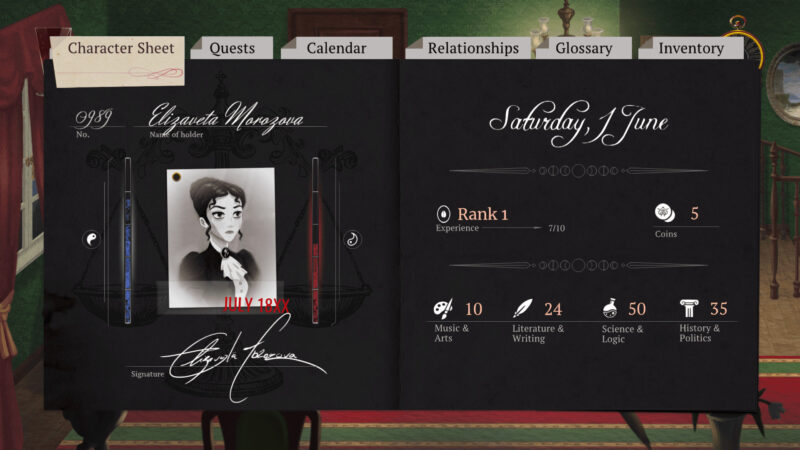
Credit: Party For Introverts.
With funding secured, Gray and Klishin have been able to focus on making Cabernet full-time. Scheduled for release early next year, the project is about half-way complete, its creators say, with its lengthy script mostly written except for “one or two” side quests. “The massive script is done,” says Gray, “and the first half is in a pretty playable state right now. I’m not a programmer, but the basis for all the quests has been completed. So it’s really a case of putting the story in for the last half and polishing everything.”
“The engine, quote-unquote, is done,” Klishin concurs. “So it’s all about populating the world with content, which is fun to do, but also really difficult – it’s easy to block it out, but it’s hard to polish it so it feels good… that being said, we’re in a good place in terms of a pipeline. We know what needs to be done – we just need to do it!”
Cabernet is due for release on PC via Steam in early 2024.





